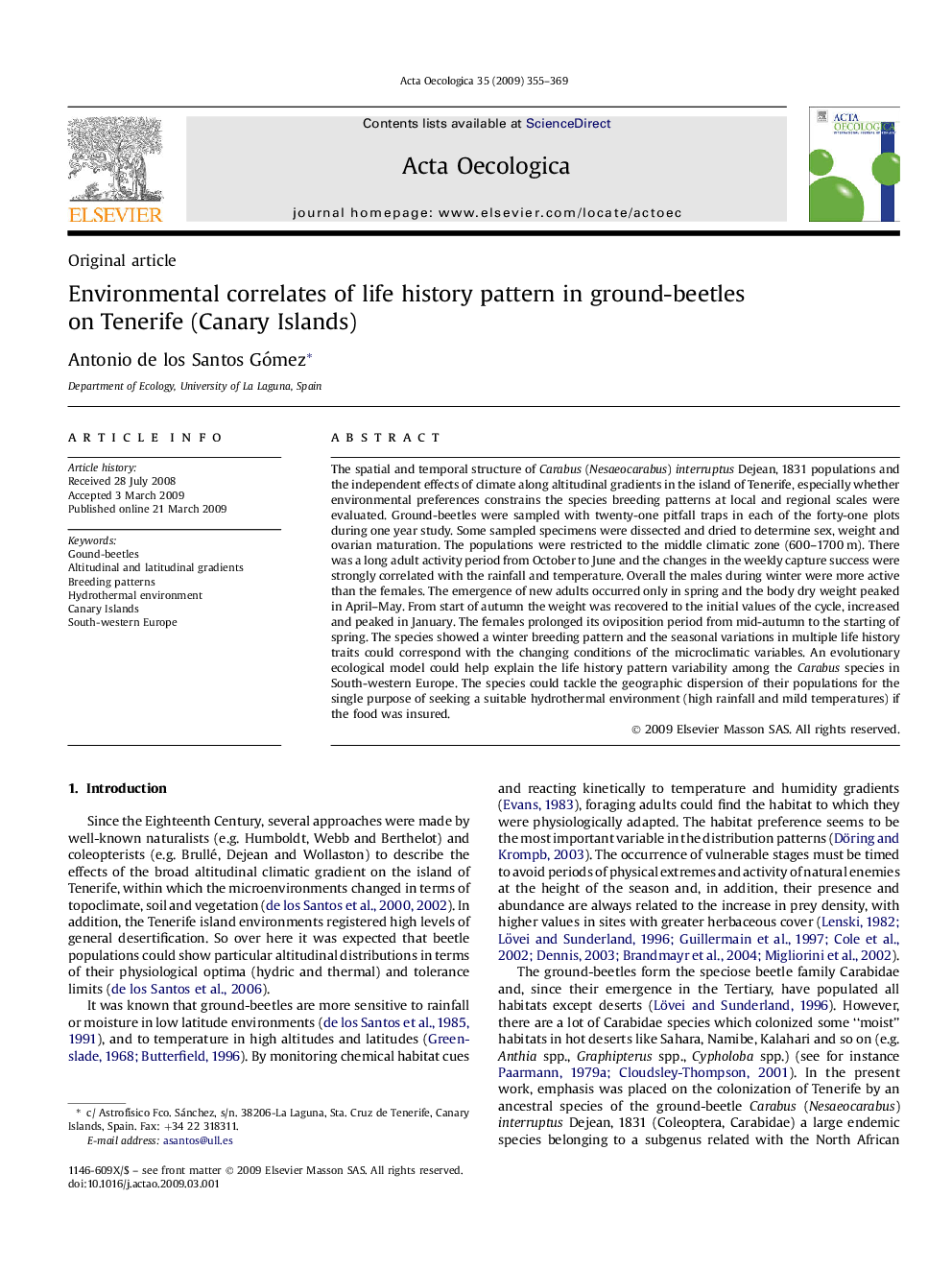| Article ID | Journal | Published Year | Pages | File Type |
|---|---|---|---|---|
| 4381000 | Acta Oecologica | 2009 | 15 Pages |
The spatial and temporal structure of Carabus (Nesaeocarabus) interruptus Dejean, 1831 populations and the independent effects of climate along altitudinal gradients in the island of Tenerife, especially whether environmental preferences constrains the species breeding patterns at local and regional scales were evaluated. Ground-beetles were sampled with twenty-one pitfall traps in each of the forty-one plots during one year study. Some sampled specimens were dissected and dried to determine sex, weight and ovarian maturation. The populations were restricted to the middle climatic zone (600–1700 m). There was a long adult activity period from October to June and the changes in the weekly capture success were strongly correlated with the rainfall and temperature. Overall the males during winter were more active than the females. The emergence of new adults occurred only in spring and the body dry weight peaked in April–May. From start of autumn the weight was recovered to the initial values of the cycle, increased and peaked in January. The females prolonged its oviposition period from mid-autumn to the starting of spring. The species showed a winter breeding pattern and the seasonal variations in multiple life history traits could correspond with the changing conditions of the microclimatic variables. An evolutionary ecological model could help explain the life history pattern variability among the Carabus species in South-western Europe. The species could tackle the geographic dispersion of their populations for the single purpose of seeking a suitable hydrothermal environment (high rainfall and mild temperatures) if the food was insured.
